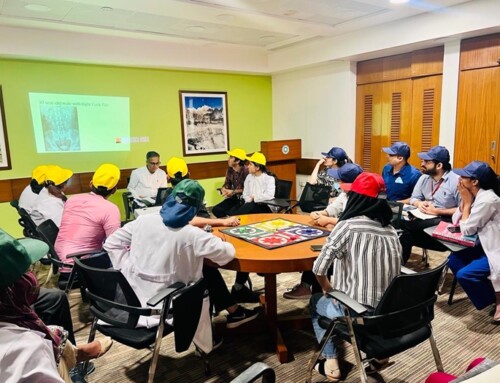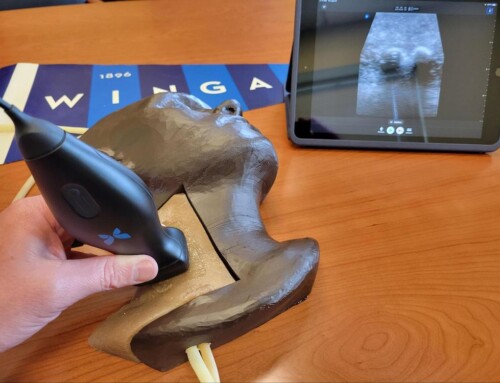The Problem
Providing high-quality healthcare in the busy, often chaotic world of EM requires teamwork. Team members must overcome varied levels of training, expertise, and conflicting personalities to function as a unit. Effective teamwork and collaboration, particularly in high-stakes, high-acuity environments, can improve patient outcomes and the cost of care.1,2 Although the Accreditation Council of Graduate Medical Education (ACGME) includes “interpersonal and communication skills” (ICS) as a core competency, there is no consensus as to how to effectively teach these skills. Further, military literature identifies “trust” as critical to effective communication within teams.3 To improve trust, communication, and collaboration, authors suggest a training that is safe, low-stakes, high-impact, and dynamically engaging.
The Innovation
Committed to creating a fun and interactive team-building activity, the authors looked to the growingly popular escape rooms. These hour-long locked room mysteries are live-action, team-based games in which players work together, solving clues and completing successions of mind-bending tasks in order to “escape the room.”4
Similar to the ED, players (learners) with variable skill-sets and backgrounds must acclimate to new environments, establish trust, analyze data, communicate goals, and solve complicated problems.
ACGME Milestones
In accordance with the Emergency Medicine Milestone Project, escape rooms provide learners with an opportunity to practice:
- Patient Care (PC8 – Task Switching)
- Interpersonal Communication Skills (ICS1 – Interpersonal and Communication Skills and ICS2 – Leading Patient-Centered Care Teams).
In order to escape the room, each player must switch tasks between assimilating clues, solving puzzles, and reassessing the environment under high-stress situations using flexible communication strategies. These challenges mirror many of those faced during a busy Monday shift in the ED!
Table 1: Emergency Medicine-Specific Accreditation Council for Graduate Medical Education (ACGME) Milestones and Learning Theories Associated with an Immersive Escape Room Activity
| ACGME Milestone | Escape Room Activity | Relevant Educational Learning Theories |
| Task Switching (PC8) |
| Constructivist: Players use previous puzzle solving knowledge to help process clues. Cognitivist: Players construct new knowledge based on real-time puzzling solving experience |
Interpersonal and Communication Skills (ICS1)
|
| Social Learning: Players imitate puzzle solving behaviors with positive effect Behaviorism: “Positive” behavior is reinforced by progression in the escape room |
| Leading Patient-Centered Care Teams (ICS2) |
| Social Learning: Players imitate puzzle solving behaviors with positive effect Behaviorism: “Positive” behavior is reinforced by progression in the escape room |
Target Learners
Medical students, residents, fellows, and faculty can all participate.
Group Size
6-10 players take part in the activity.
Materials Needed
None
Description of the Innovation
The first escape room was played at a publishing company (SCRAP) in 2007, but soon skyrocketed from occult popularity to global mainstream media today.5

Real Escape Game from Japan is an interactive live puzzle event in which teams solve mysteries within a time limit. This has since inspired the use of an escape-room style activity as an educational tool for EM residents featured in this post. The authors have no financial relationship with this website.
Most escape room companies have an average cost of about $25-30 per person for a 1-hour game, and typically allow 10-12 players at a time. The group went to a local escape room company called Liberty Escape Room.
While each escape room draws its inspiration from a myriad of available resources (e.g. puzzle and treasure hunts, haunted houses, adventure game shows, point-and-click adventure games, historical or fantasy fiction), the main gameplay remains constant:
- Players are first met by a game-master, who explains the rules of the fictional environment and subsequently locks the door, initiating the countdown timer.
- Players must work together, practicing teamwork, communication, task-switching, and critical thinking, as well as lateral thinking to tackle increasingly complex puzzles.
- Puzzles range from hidden objects, physical object assembly such as jigsaw puzzles, counting, and/or symbol matching. All activities require the team to quickly recognize and utilize the unique experiences, skills, background knowledge and physical abilities of each team-member.4
- After the game concludes, members often undergo a structured debriefing process, similar to that in medical simulation, in which the players discuss their game experiences, emotions, and problem-solving techniques with the game-master. Since many of the puzzles are solved in parallel, this opportunity provides both learners and facilitators the opportunity to review which teamwork behaviors were high-yield during the interactive experience.

Escape room activities are pre-selected by the commercial escape room company. Instructors do not have to recreate puzzles, but utilize the natural environment provided by each of the sites. Most of the escape room activities utilize similar-themed puzzles, but in different environments (e.g. pirate ship, dungeon, secret agent scenario).
Lessons Learned
Through this activity, we discovered that learners get the most out the experience when they are fully immersed in the activity. This requires the learner to suspend his/her disbelief and fully embed himself/herself in the escape room “world.” Once that has been established, the learner is better able to integrate his/her skills into the experience.
The biggest external limitations of this activity are space availability and number of individuals that can be accommodated in the escape room facility. As a result, it may be difficult to hold this activity with a large group concurrently. It is possible, however, to divide larger groups into more manageable sizes of 6-10 learners.
This activity requires minimal to no preparation; the activity is created and executed by an Escape Room company.
Debriefing after the activity provides insight and learning. During this time, the players further analyzed aspects of communication and problem-solving that worked for the group’s ultimate goal of escaping the room. It allowed for discussion and revealed aspects that may have gone missed or misinterpreted by the group. The debriefing ended with a dialogue on parallels that exist in the ED.
Ultimately, the escape room allows learners to engage in an activity that rewards teamwork and solid leadership.
Theory Behind the Innovation
The escape room activity touches on many learning theories:6
- Behaviorism: “Positive” behavior is reinforced by providing progression through the escape room process, whereas “negative” behavior either doesn’t help the players (i.e. learners) to escape the room or even negatively impacts the ability to escape.
- Social learning: Learners imitate or perpetuate behaviors of puzzle-solving that the group leader may be demonstrating with positive effect.
- Cognitivist approach to learning: Learners also assimilate their previous knowledge and skills (i.e. pattern recognition, mathematical fluency, trivia knowledge) to help them process environmental clues.
- Constructivism: Learners construct their own knowledge based on their real-time experiences of going through the different puzzles to escape the room.
Read more about the IDEA Series.







